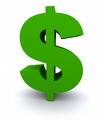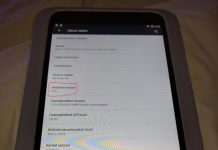 EBookNewser and GalleyCat have posted an infographic from e-book sales tracking company Booklr which compares the average e-book price of the Top 100 e-books for the Kindle and Nook platforms. Based on information collected over the week of January 12th through 19th, the chart shows that the average price of an Amazon Kindle e-book is $6.48, whereas the average price of a B&N e-book is $8.94.
EBookNewser and GalleyCat have posted an infographic from e-book sales tracking company Booklr which compares the average e-book price of the Top 100 e-books for the Kindle and Nook platforms. Based on information collected over the week of January 12th through 19th, the chart shows that the average price of an Amazon Kindle e-book is $6.48, whereas the average price of a B&N e-book is $8.94.
The difference seems to be caused by fully 35% of Amazon’s titles being $1.99 or less, whereas none of B&N’s were. I wonder, though, whether this might be caused by Amazon counting free titles in its lists and B&N not? Or perhaps it’s not possible to list a book at $1.99 or less under B&N’s publishing system. B&N also seems to have a higher percentage of books on its best-seller list over $10 (40% as opposed to Amazon’s 27%).
Regardless, this seems to be another area where Amazon is out-competing B&N. Given how price-sensitive today’s consumers are, a place where you can get a bunch of books for $1.99 or less would seem very attractive.


































As indicated in the comments of the linked article, B&N doesn’t include extremely low-priced books in their top 100 so their “average” price is higher. I was not aware of this “problem” before…
I would have hoped, Chris, that a little research would have been done before blaring what might well be a false conclusion as a headline.
B&N doesn’t include books priced less than $2.99 in its top 100 list. Consequently, the graph is comparing apples with oranges and getting grapefruit results. I suspect that the gap between the two ebooksellers would be much narrower if apples were compared to apples and apple results were obtained.
The other problem with the graph is that there is no way to know whether the titles that form the database are the same. If, for example, Amazon’s #1 book is a free version of Moby Dick and B&N’s #1 book is The Swerve: How the World Became Modern at $14.01, the results would be skewed. B&N, for example, may have fewer customers looking for free public domain titles than does Amazon. The only valid pricing comparison is apple to apple (or book to book)
The bottom line is that while graphics like these produce great headlines, the headlines and the graphics are generally so misleading as to have little value except in a very surface public relations war. Now we can watch as people blast all over the Internet how Amazon’s ebooks are so much cheaper than B&N ebooks and point to your article and the graphic as proof.
This is very important news. That Barnes & Noble refuses to include books below $2.99 on its bestseller list is because????
But that aside, even if Barnes & Noble did, the survey I conducted for Digital Book World revealed that 28% of the top 50 bestselling Kindle e-book titles on Amazon.com were not available in Nook editions at Barnes & Noble. (http://www.digitalbookworld.com/2012/four-disadvantages-for-barnes-noble-in-the-bookseller-wars/).
The sad fact is that Amazon is killing B&N (and Apple and others) when it comes to self-published authors. Too often authors won’t even bother with B&N. Yes, these self published books are generally less expensive. So even if B&N included lower price books its overall pricing would skew higher because many self-published authors aren’t there.
Absolutely astonishing elitist and contemptible policy by B&N. Astonishing.
Richard, “The Swerve: How the World Became Modern” is an unfortunate example of the price differences being addressed. The price I see is $16.17, $6.74 higher than Amazon’s $9.43 cost. Anecdotally, I see higher prices on most of the slightly obscure, non-agency books, particularly non-fiction books, found at B&N. However, the cost differences aren’t usually that large.